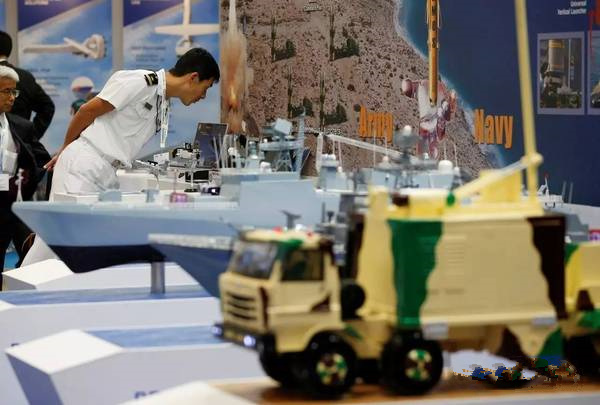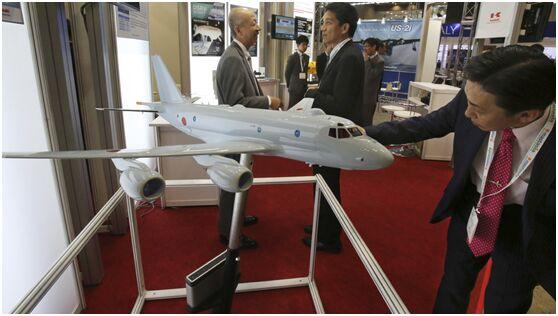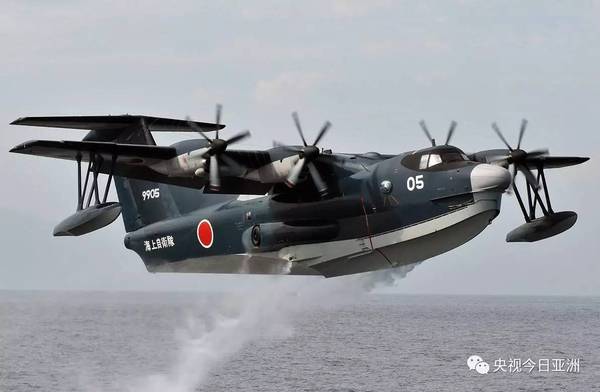CCTV News:For many years after World War II, Japan has always insisted on prohibiting arms exports in principle, so it is of little substantive significance to hold defense exhibitions. However, as the Abe government gave a green light to arms exports, the defense exhibition also began to "land" in Japan. No.12, the only international defense exhibition in Japan at present — — The "Air and Sea Safety Equipment Exhibition" kicked off in Chiba Prefecture near Tokyo, and the enthusiasm of major Japanese military enterprises far exceeded that of previous years.

Japan Air and Sea Safety Equipment Exhibition
Defense launches, Japanese military giants enthusiastically "platform"
This year’s "Air and Sea Safety Equipment Exhibition" is held in Japan for the second time. Compared with the last exhibition in 2015, the biggest difference this year is the "collective dispatch" of Japanese domestic arms dealers.
In 2015, the Abe government just lifted the "Three Principles of Arms Export", and it seems that domestic arms dealers in Japan are still reluctant to advertise themselves. At that year’s exhibition, only one company of Nippon Electric participated in the exhibition alone, and other companies just set up a collective booth; But this year, at least 16 Japanese arms dealers participated in the exhibition alone, including arms giants such as Mitsubishi Heavy Industries and Kawasaki Heavy Industries.

Japan Air and Sea Safety Equipment Exhibition
In just two years, why has the attitude of Japanese arms dealers changed so dramatically? This is not unrelated to the strong promotion of the Abe government.
The Japanese Defense Ministry specially invited defense officials from Indonesia, Malaysia, the Philippines, Thailand, Vietnam and other ASEAN countries. Japan announced that it will hold talks with defense officials of ASEAN countries on June 15th to discuss topics such as weapons and defense technology cooperation. Reuters commented that Japanese Prime Minister Shinzo Abe is vigorously promoting Japan’s international military relations and trying to strengthen its influence on Southeast Asian countries. This defense exhibition provides an opportunity for this.
Japan’s arms sales have achieved little, and ASEAN countries do not buy it.
In fact, since the Japanese government adopted the new "Three Principles of Arms Export" more than three years ago, Japan has been trying its best to sell weapons and equipment to ASEAN countries, but the sales results are not satisfactory.
The new "Three Principles of Arms Export" has been implemented for more than three years. Abe’s government has been promoting the export of Japanese weapons and equipment overseas, and Abe has also been called the chief "salesman" of Japan’s current arms export by some media. However, what about Abe, a salesman?

Japan maritime patrol aircraft
The Philippines can be said to be Japan’s most important defense partner in Southeast Asia. Abe has visited the Philippines many times. However, after many consultations, the two sides have so far reached the purchase of 10 patrol boats and the lease of 5 TC-90 trainers. Not only is the transaction price far below the market price, but Japan also provides training for the Philippine Navy.
Vietnam is also the main target country for Japan’s defense equipment export. Since August 2014, Japan has provided a number of patrol boats to Vietnam. It is worth noting that Japan has provided assistance to Vietnam to support its procurement of new patrol boats. Strictly speaking, this is not a normal sale.
In addition to ASEAN countries, Japan also actively promoted its own weapons and equipment to Australia, India and other countries, but all ended in failure.
On April 19th, 2016, the Japanese "black dragon-class" submarine "White Dragon" docked at Sydney Harbour for the first time. Everyone thought that Australia’s purchase of Japanese "black dragon-class" submarines was "certain". However, a week later, the bidding result of Australia’s new submarine came out, France won the bid, and Japan suffered a crushing defeat.
Japan is also actively promoting its US-2 large seaplane to India. However, the latest news from Japanese media shows that it has been five years since Japan and India started relevant consultations, and the enthusiasm of India has gradually cooled down, and the arms sales project is on the verge of premature death. On the one hand, seaplanes are not urgently needed for India, and even can be described as "dispensable". On the other hand, Japan sticks to the high price, and the unit price of US-2 aircraft is as high as 13 billion yen, about 800 million yuan.

US-2 large seaplane
Expert: There is an attempt to target the ASEAN countries’ arms sales to Japan.
To sum up, it can be seen that the main target market of Japanese equipment is in ASEAN countries, and these potential buyers are all around China. Therefore, some media have described Abe’s arms sales as "arms sales around China", and this politically oriented arms sales model is doomed to fail.
Du Wenlong, a military expert, said that there are several considerations for Japan to do this: First, all Japanese arms sales are political arms sales, with the aim of establishing close ties with ASEAN countries, especially military ties with ASEAN countries, so that Japan can maintain a military presence around the South China Sea.
Second, if Japan’s military relations with ASEAN countries reach a high level, then Japan will change from a foreign country in the region to a country in the region. At present, Japan regards its old equipment as "bait" in an attempt to force ASEAN countries to swallow the bitter fruit.
Third, we can see that Japan’s sales promotion results are not good, because Japan’s equipment has inherent defects, such as high cost and limited military spending of ASEAN countries, so it is impossible to spend a lot of military money to buy high-end Japanese weapons and equipment. As far as the current situation is concerned, it is impossible for Japan to form a large amount of sales of sophisticated weapons in the ASEAN region. Japan may temporarily give away some weapons and equipment or reach a small transaction in the ASEAN region, but in order to form a dominant position in the South China Sea, letJapan’s strategic intention has become that of ASEAN countries.It is even more difficult and basically does not have the possibility of realization.
关于作者